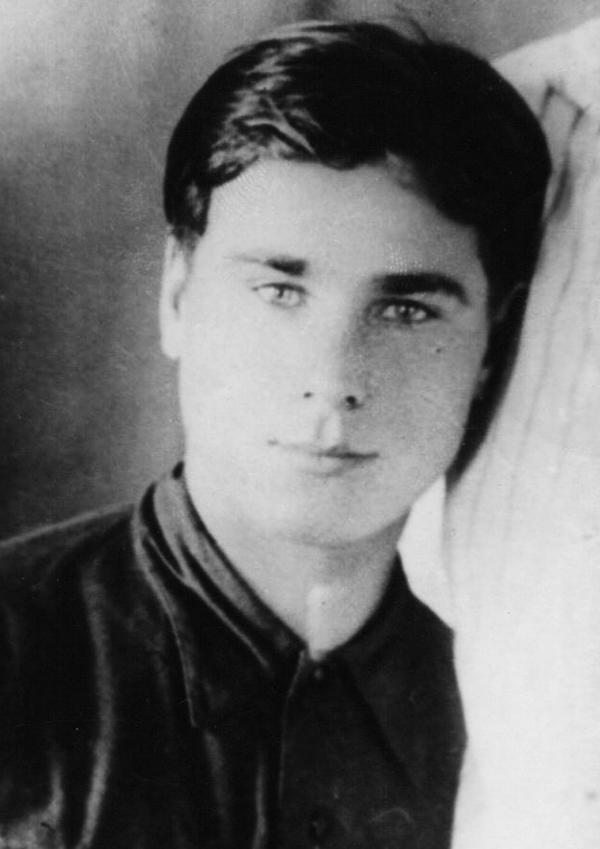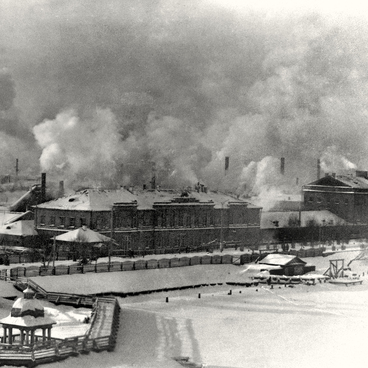In 1901 Alexandra Kaverina, 17, married in church Timofei Kalashnikov, 19, against the will of the parents. A year later a daughter called Praskovia was born into the family as the first-born. She lived 8 year only and died from typhoid. The same fate befell 11 of the Kalashnikovs’ 19 children.
Ivan was a middle son in the family, he was born in 1913. By the time the family was dispossessed as kulaks and were sent from the Altai village to the Tomsk region, the young lad was 17 years old. He was considered to be of a full legal age and for this reason he was subject to repression along with the adults. That meant that the road to science to which the young man was inclined was closed.
In the Altai region Ivan Kalashnikov finished a seven-year school and dreamed of continuing his education. He was interested in exact sciences — physics, mathematics. After being deported to the village Nizhnee Mokhovoye Ivan Kalashnikov soon became head of the family because his father, Timofei Alexandrovich, died several months later. The Kalashnikovs’ two elder daughters, Gasha and Nyura, stayed in the Altai territory since by that time they already had families of their own. Repressions did not affect them. But the elder son Victor tried to get away, was caught, convicted and sent to build the White Sea-Baltic Sea canal. As a result, by 1931 Ivan became the oldest man in the family and had to take care about his younger brothers and sisters and help his mother.
To continue studies in the village of Nizhnee Mokhovoye was out of the question: it had only a primary four-year school. Besides, Ivan had other things on his mind than education for he shouldered care about home and household. The mother’s decision to marry a widower neighbour Efrem Nikitich Kosach was taken by the young man with caution. But soon, unlike Mikhail, he already called the hard-working and level-headed man his father.
Civil rights were granted back to the Kalashnikovs, like to many dispossessed families in the village of Nizhnee Mokhovoye, as late as 1936. That meant that the former enemies of the people could freely leave Siberia and settle down elsewhere. Mikhail Kalashnikov took this opportunity and went back to the Altai region after finishing a seven-year school in the neighbouring village. Ivan stayed in Siberia and in 1942 was called up to the front. He served in the 331th rifle division, military rank is rifleman, Red Army man. Ivan Kalashnikov perished on September 19, 1943 at the age of 30 and was buried in the village of Petrovo of the Smolensk region.
Ivan was a middle son in the family, he was born in 1913. By the time the family was dispossessed as kulaks and were sent from the Altai village to the Tomsk region, the young lad was 17 years old. He was considered to be of a full legal age and for this reason he was subject to repression along with the adults. That meant that the road to science to which the young man was inclined was closed.
In the Altai region Ivan Kalashnikov finished a seven-year school and dreamed of continuing his education. He was interested in exact sciences — physics, mathematics. After being deported to the village Nizhnee Mokhovoye Ivan Kalashnikov soon became head of the family because his father, Timofei Alexandrovich, died several months later. The Kalashnikovs’ two elder daughters, Gasha and Nyura, stayed in the Altai territory since by that time they already had families of their own. Repressions did not affect them. But the elder son Victor tried to get away, was caught, convicted and sent to build the White Sea-Baltic Sea canal. As a result, by 1931 Ivan became the oldest man in the family and had to take care about his younger brothers and sisters and help his mother.
To continue studies in the village of Nizhnee Mokhovoye was out of the question: it had only a primary four-year school. Besides, Ivan had other things on his mind than education for he shouldered care about home and household. The mother’s decision to marry a widower neighbour Efrem Nikitich Kosach was taken by the young man with caution. But soon, unlike Mikhail, he already called the hard-working and level-headed man his father.
Civil rights were granted back to the Kalashnikovs, like to many dispossessed families in the village of Nizhnee Mokhovoye, as late as 1936. That meant that the former enemies of the people could freely leave Siberia and settle down elsewhere. Mikhail Kalashnikov took this opportunity and went back to the Altai region after finishing a seven-year school in the neighbouring village. Ivan stayed in Siberia and in 1942 was called up to the front. He served in the 331th rifle division, military rank is rifleman, Red Army man. Ivan Kalashnikov perished on September 19, 1943 at the age of 30 and was buried in the village of Petrovo of the Smolensk region.



